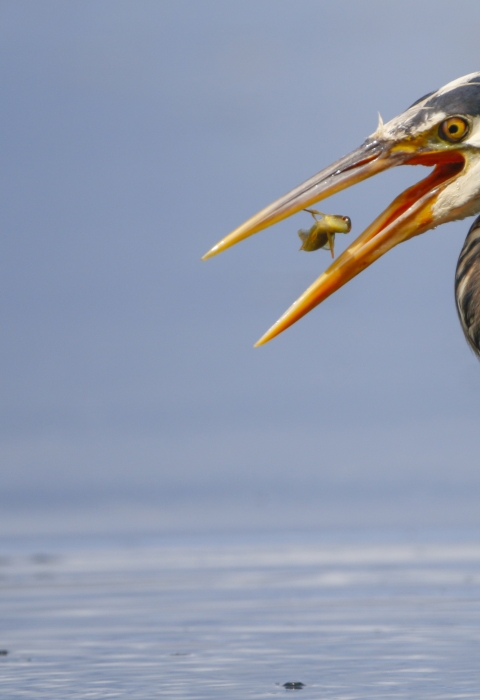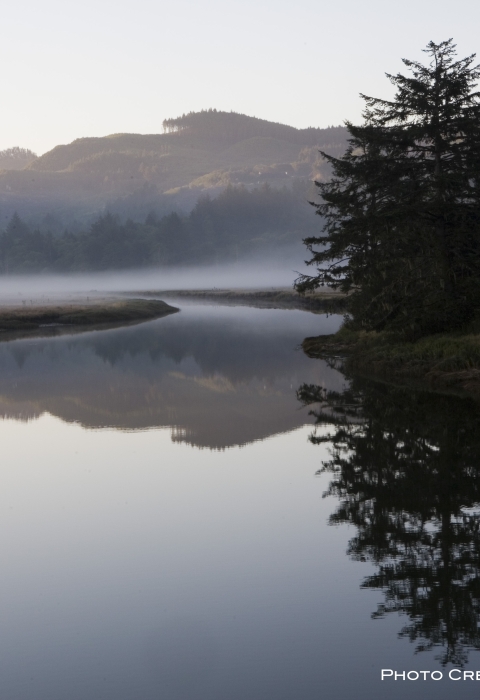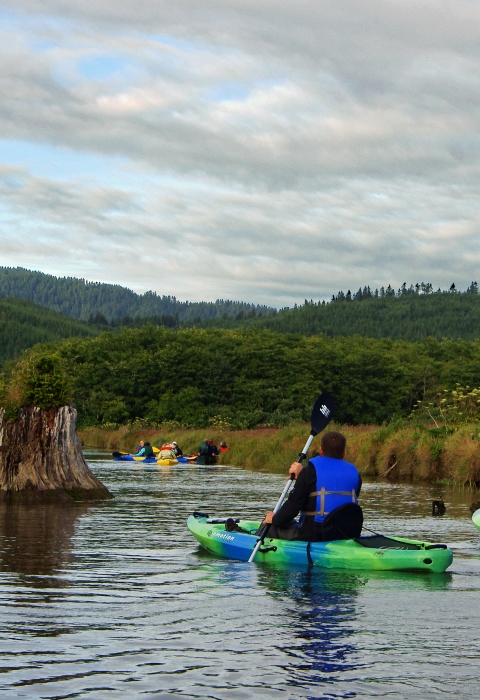Facility Rules and Policies
The Refuge is open from sunrise to sunset.
Access the Alder Island Nature Trail and walk-up boat launch from the refuge parking area, on the east side of Highway 101, just south of the Highway 229 junction.
This is a fee-free area.
Pets are prohibited on the nature trail. Pets are not permitted on many National Wildlife Refuges because wildlife may perceive them as predators and cause disturbance. The National Wildlife Refuge System puts wildlife first, therefore we ask you to enjoy these public lands without the company of your pets.
Enjoy the Refuge from designated trails and open areas and leave the rest of the Refuge for wildlife.
Alder Island has a boat launch available for use by visitors. This car-top boat launch is for the launch of non-motorized boats only: it is not a trailer-accessible ramp. Boaters must follow all State and Local Regulations when paddling from the Refuge, including carrying an invasive species invasive species
An invasive species is any plant or animal that has spread or been introduced into a new area where they are, or could, cause harm to the environment, economy, or human, animal, or plant health. Their unwelcome presence can destroy ecosystems and cost millions of dollars.
Learn more about invasive species permit for qualifying vessels.
Boating in the marine environment requires careful planning. Always check the weather and tides before heading out: unwitting paddlers can get stuck in receding tides or extreme winds. See the Activities section on Boating for more information.
Waterfowl hunting is permitted at this refuge in designated locations. Hunters must follow all refuge and state regulations. Hunters can find more information here or by calling the Refuge at (541) 867-4550.
Fishing and shell-fishing are permitted at this refuge along the banks and in the mudflats in designated locations. Anglers and collectors must follow all refuge and state regulations. Anglers and collectors can find more information here or by calling the Refuge at (541) 867-4550.
The refuge is open sunrise to sunset. Unauthorized overnight parking and camping are strictly prohibited at this National Wildlife Refuge. Violation of these rules may result in a fine.
It is illegal to operate unmanned aircraft from Refuge lands. Special Use Permits are issued when drone use is deemed appropriate. National Wildlife Refuge System lands are often home to threatened and endangered species—these wildlife can be disproportionately affected by drone flights. Disturbing wildlife is illegal. Fines can be levied if a drone is observed disturbing wildlife, e.g. flushing nesting birds from an offshore island or causing resting seals or sea lions to flee for the water, regardless of where the operator is standing. For more information on drone use over refuges, consult the Service's UAS Resource Guide. Get a detailed guide to responsible drone use here.
Anywhere you visit the outdoors, help preserve the beauty of nature. Take only pictures and leave only footprints. Learn more about Leave No Trace.
Playing recorded bird calls to entice or elicit a response from birds in the wild is discouraged. We discourage the use of recordings, apps, or websites for the purpose of eliciting a response in wildlife because it can be disturbing to wildlife and other visitors. Two Refuge regulations apply: 50 CFR 27.51 prohibits disturbing and attempting to disturb wildlife on any National Wildlife Refuge and 50 CFR 27.72 prohibits “the operation or use of audio devices including radios, recording and playback devices, loudspeakers....so as to cause unreasonable disturbance to others in the vicinity.” Use of audio devices to lure birds violates both regulations.
Physical geocaches are not permitted on National Wildlife Refuges, though virtual geocaching is permitted. Traditional geocaching requires the burial of materials or placement of an item in a location, which requires compatibility with refuge purposes and a Special Use Permit. To learn more about this distinction contact the Refuge.
Only the following persons may possess, use, or transport firearms on National Wildlife Refuges in accordance with this section and applicable Federal and State law: (a) Persons using firearms for public hunting under the provisions of 50 CFR part 32. (b) Persons carrying unloaded firearms, that are dismantled or cased, in vehicles and boats over routes of travel designated under the provision of subchapter C. (c) Persons authorized to use firearms for the taking of specimens of wildlife for scientific purposes. (d) Persons authorized by special regulations or permits to possess or use firearms for the protection of property, for field trials, and other special purposes. [46 FR 47230, Sept. 25, 1981]
Bicycle use is permitted on roads leading to refuge parking areas, and bikes may be locked at racks located within parking areas. Biking is not permitted on trails due to the narrow walkways, the presence of pedestrians, and the resulting potential for user conflicts. Trails are limited to pedestrian and disabled-access users.


